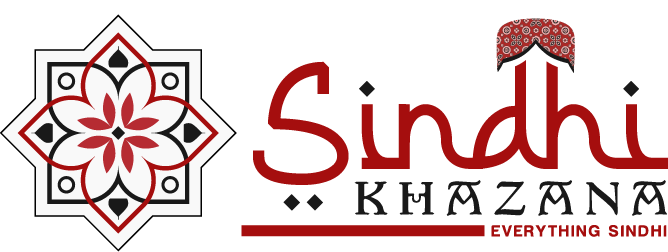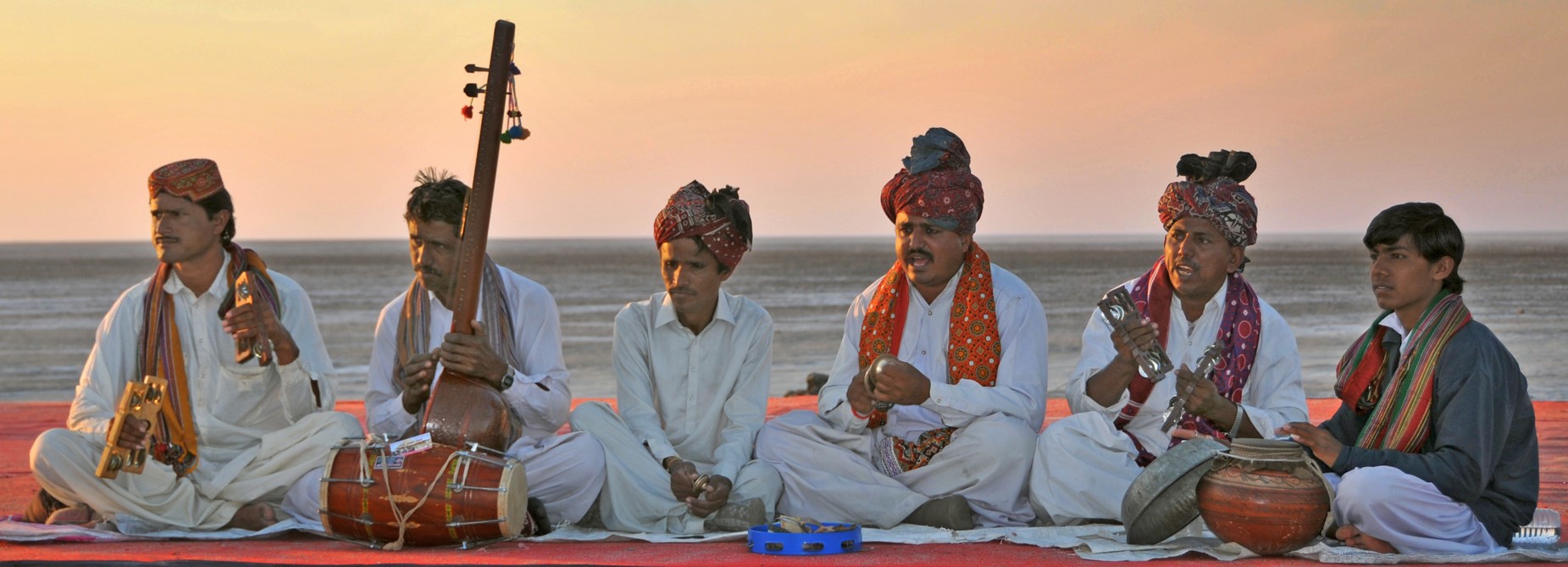Sindh is a land of saints, fakirs, and dervishes. Its songs and music come from its divine Sufi soul, haunting and melodious. Using simple instruments like borrindo, yaktaaro, naar, naghara, kartaal, manjira, tamburo and duhil, Sindhis sing Sufi kalaams (verses) and kafis ( a poetic rendition of the dialogue between the Soul and the Creator) at dargahs. Sufi poets such as Shah Abdul Latif Bhitai, Sachal Sarmast and Sami have left behind a rich compilation of poetry to be sung as songs.
Yaktaaro, one-stringed instrument, is used by the fakirs and musicians alike at dargahs and weddings. Made of dried pumpkin, its pitch can be changed by loosening or tightening the string.
Dando, jhanjree and khartaloon are the accompanying jingling instruments used with yaktaaro.
Naar is a flute made of reed.
Bhorrindo is an ancient instrument made of a clay ball with four holes, though now a slightly more sophisticated version with baked clay is used.
A pair of nagaras are percussion drums played with sticks.
Duhil is a Sindhi drum with two sides.
Surandho is a wooden Sindhi instrument with a number of strings that may range from five in simpler versions to thirteen in sophisticated versions.
Chaang is a simple instrument made from iron which is held in the mouth and played with one finger.

Ladaas are Sindhi marriage songs sung to the beat of the duhil. Women dance at the joyous and sometimes ribald songs causing much merriment in the house of celebration.
Sindhi music includes bhajans, qawwali, folk songs, and ghazals too.
Songs like ‘Dama Dum Mast Qalander’ and ‘Ho Jamalo’ when sung always bring the audience to their feet dancing and singing.
Singers and musicians such as Prof Ram Panjwani, Master Chander, Bhagwati Navani, Kala Hazari, and Kamla Keswani have left their mark on Sindhi music. Abida Parveen is renowned for her rendition of Sufi songs and music.
Sindhi dance celebrates the day-to-day life of people. Most dances are of the folk variety which everyone can participate in.
The oldest and the most original form of Sindhi dance, song, music, and drama is Bhagat. A very popular form of entertainment, a Bhagat performance would find people travelling long distances to attend it. Folk songs depicting traditional or religious stories and devotional songs in the praise of God were the themes on which the Bhagat was performed. The performance had upto six to eleven singers and musicians. The lead performer, called Bhagat, wore a chher (anklets), jamo(a long top), pagdi (turban), kundal (earrings), and a bright tilak on the forehead. He sang in a melodious voice loud enough to be heard a kilometre away and danced on the central aisle with the audience watching from both sides. He kept his audience mesmerised for hours with his storytelling, dramatizing every emotion of the narrative, moving the people either to laughter or tears. He would be joined by the back-up singers who supported his lead line with a simile or the other half of the couplet. It was a performance that started at night and continued till dawn. The musical instruments used were sarangi (a stringed instrument), tablas, and dholaks ( both percussion instruments).
The most famous Bhagat of all times was Sant Kanwaram, revered by both Hindus and Muslims alike for his divine rendition of kalams and the sur prabhati (sung early morning). Today, Sindhi Bhagats are considered the promoters and preservers of the rich Sindhi culture and heritage.
Chhej is a vigorous complex dance performed by men during festivals and religious processions. Each man wielded two small sticks and swirled while striking the sticks in rhythm. The musical instruments used are sharnai and duhil.
Dhamaal is a meditative spiritual dance originally performed by Lal Shah Baaz Qalandar. Today it is performed by his devotees, malaangs, and qalandars, on the fast beat of the nagara.
Sources:
For description of Bhagat performance: www.Jhulelal.com
For Sindhi Musical Instruments:
Featured Image: The Sindhi musicians playing (from left to right) kartaal, tambooro with the duhil in front, manjira and gado gamelo. The musicians are Meghwal Marwada migrants from Tharparkar, Sindh to Kutch,Gujarat.
Featured Image Credit: Mr. Dinesh Shukla, Ahmedabad
Jyoti Mulchandani
Ahmedabad


Give a Reply